Fruit and batteries definitely don’t seem to be a combination that goes together. Your students will love this science experiment that has them creating fruit batteries and testing which fruit works the best. Free printables, including a reading passage, are included to help you make the most of this science experiment.
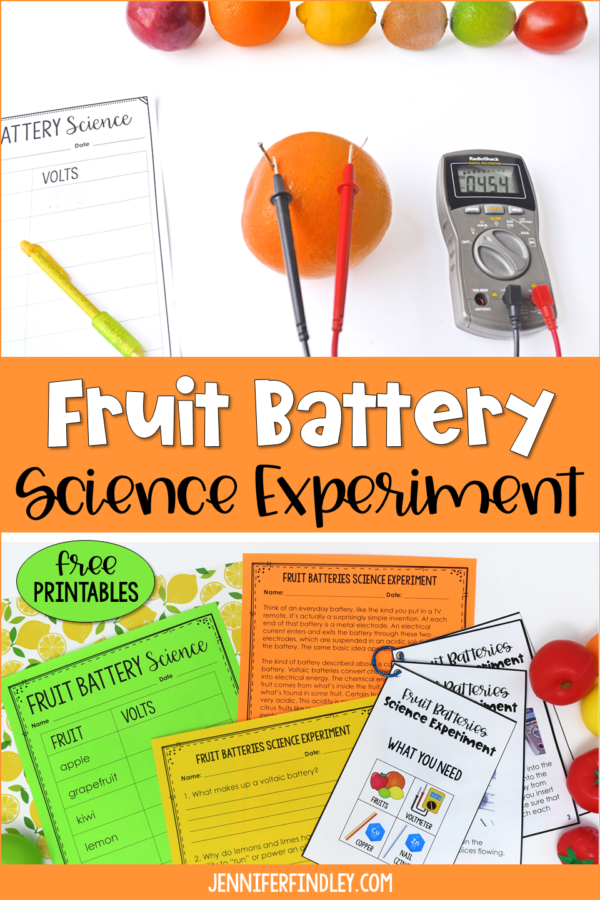
Want to see more science activities and resources?
Fruit Battery Science Experiment Materials Needed:
- various acidic or citrus fruit (we used apple, grapefruit, kiwi, lemon, lime, orange, and tomato)
- a small piece of copper (any copper material will do, even a copper-coated penny)
- a galvanized or zinc nail (any zinc material will do)
- a voltmeter or multimeter
- free printable tracking chart (at the end of this post)
- free passage and comprehension questions download (at the end of this post)
Fruit Battery Science Experiment Directions
1. Roll the fruit around on the counter to get the juices flowing.
2. Insert the piece of copper into the fruit.
3. Insert the nail into the fruit at least an inch away from the piece of copper. If you insert them at an angle, make sure that the pieces do not touch each other inside the fruit.
4. Turn on the voltmeter. If you are using a multimeter, make sure it is set to measure volts.
5. Touch the red wire to the copper and the black wire to the zinc. Firmly hold them still for a few seconds until the voltage stops on a number. Some meters come with alligator clips, so you could use those to clip the wires onto the copper and zinc.
6. Write down the voltage on your sheet and test the next fruit.
7. Analyze the data to determine which fruit had the highest voltage.
The Science Behind the Fruit Battery Science Experiment
Some fruits, especially citrus fruits like lemons and limes, are very acidic. The acid inside the fruit allows an electrical current to flow between the zinc and copper.
After the Experiment Reading Activity
Adding in reading and writing into a science experiment, activity, or demonstration allows you to enhance your students’ understanding and get more mileage from the activity.
For this activity, the students will read a short text that describes the science behind it (similar to what is explained above for the teacher’s reference). The students will use the details they learned in the text to explain what happened during the science experiment. They will also answer three comprehension questions using details from the text.
The questions your students will answer include:
- What makes up a voltaic battery?
- Why do lemons and limes have the ability to “run” or power an object?
- What activates an electrical current, and why is that important?
After reading the passage and answering the questions, you can invite your students to share their responses and have a classroom discussion about electrical currents.
How Can I Get the Free Printable?
Click here or on the image below to download the fruit battery science experiment printable pack.

If you want more resources and even freebies for science, click here to check out my other posts, such as apple oxidation, erosion with grass, dissolving Peeps, gingerbread cookies and candy hearts, creating avalanches and frost, states of matter with chocolate, experiments with growing plants and flowers (including a seed race), and much more.
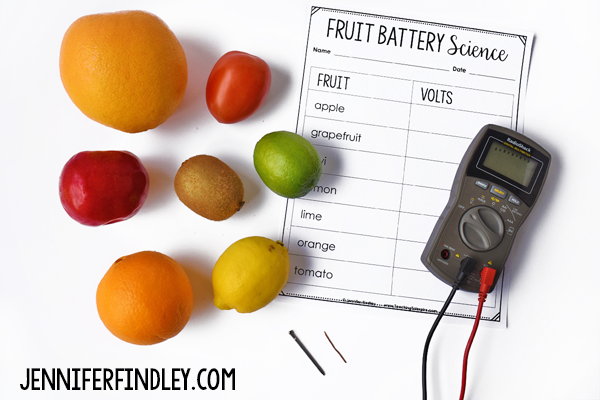
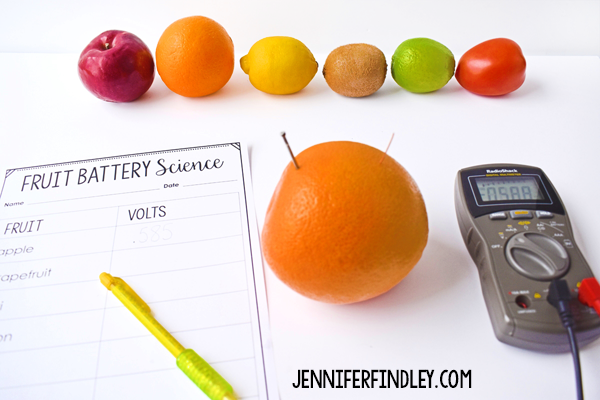
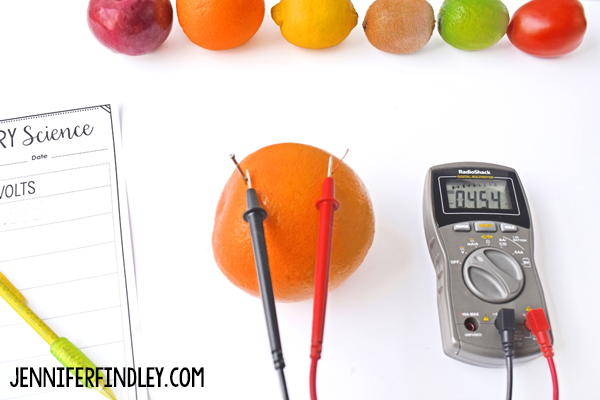
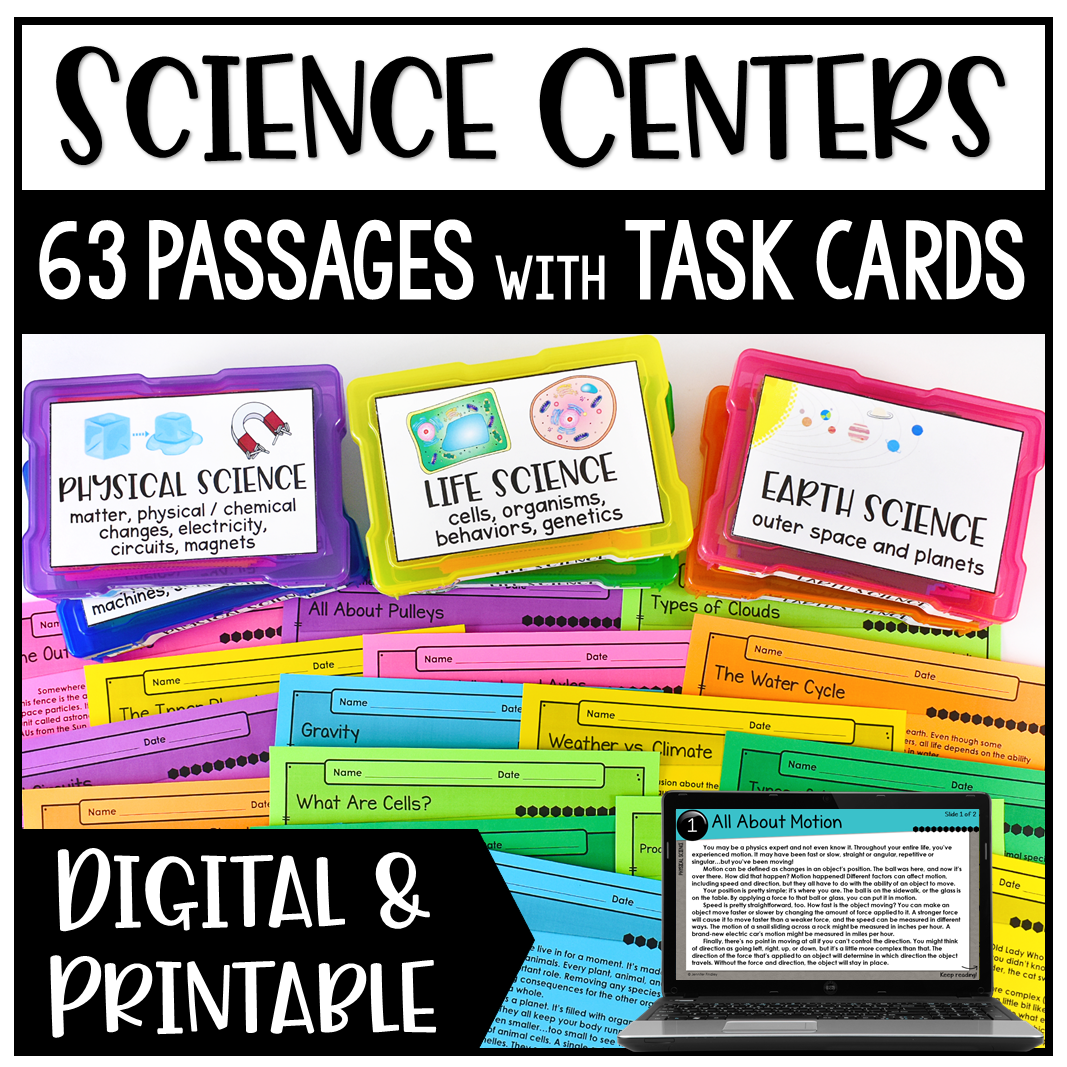








Do you have a link to a voltmeter?
Am a parent and I have a child who asked me to help on choosing a good science project, so am searching for the best project please help me choose the right one. thanks
this is good